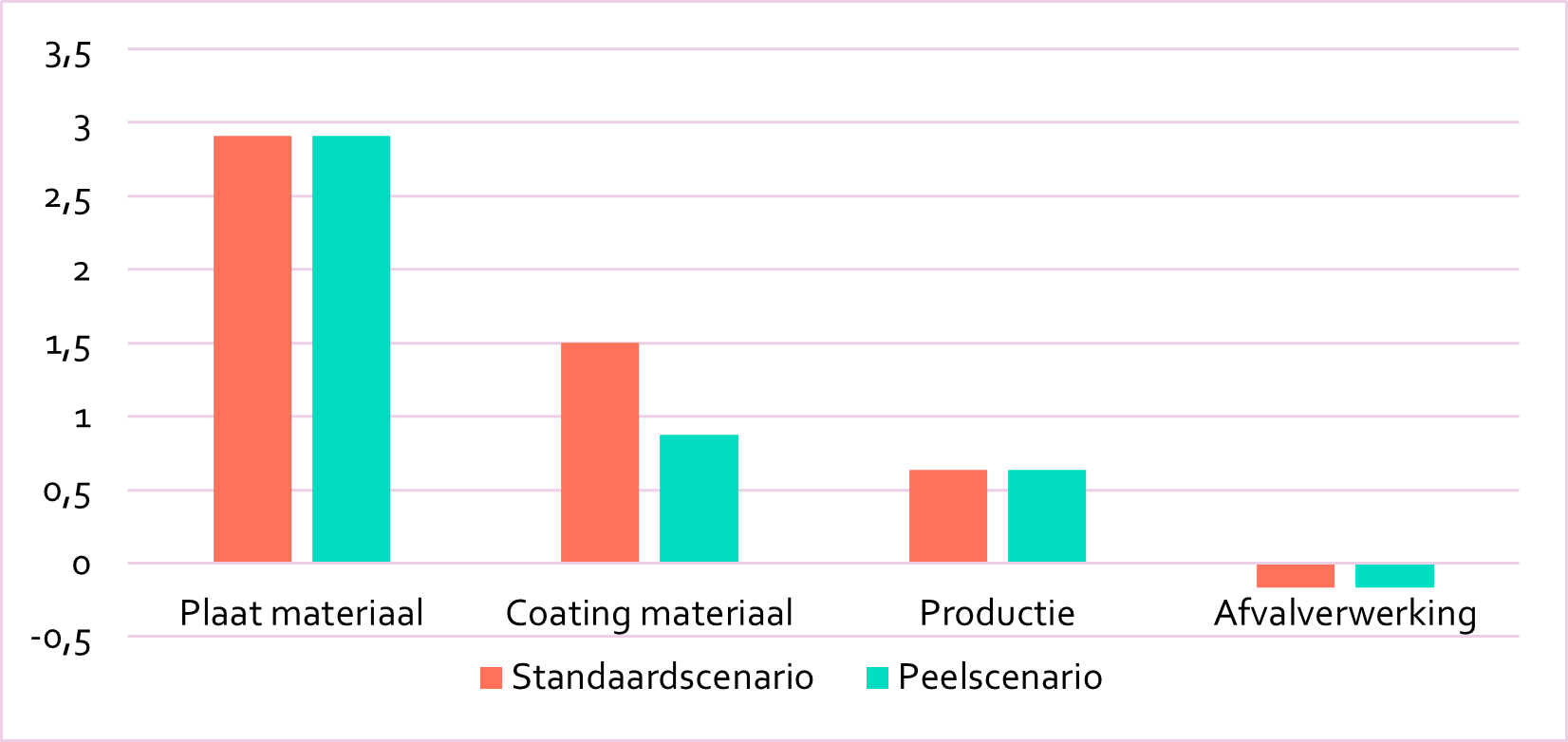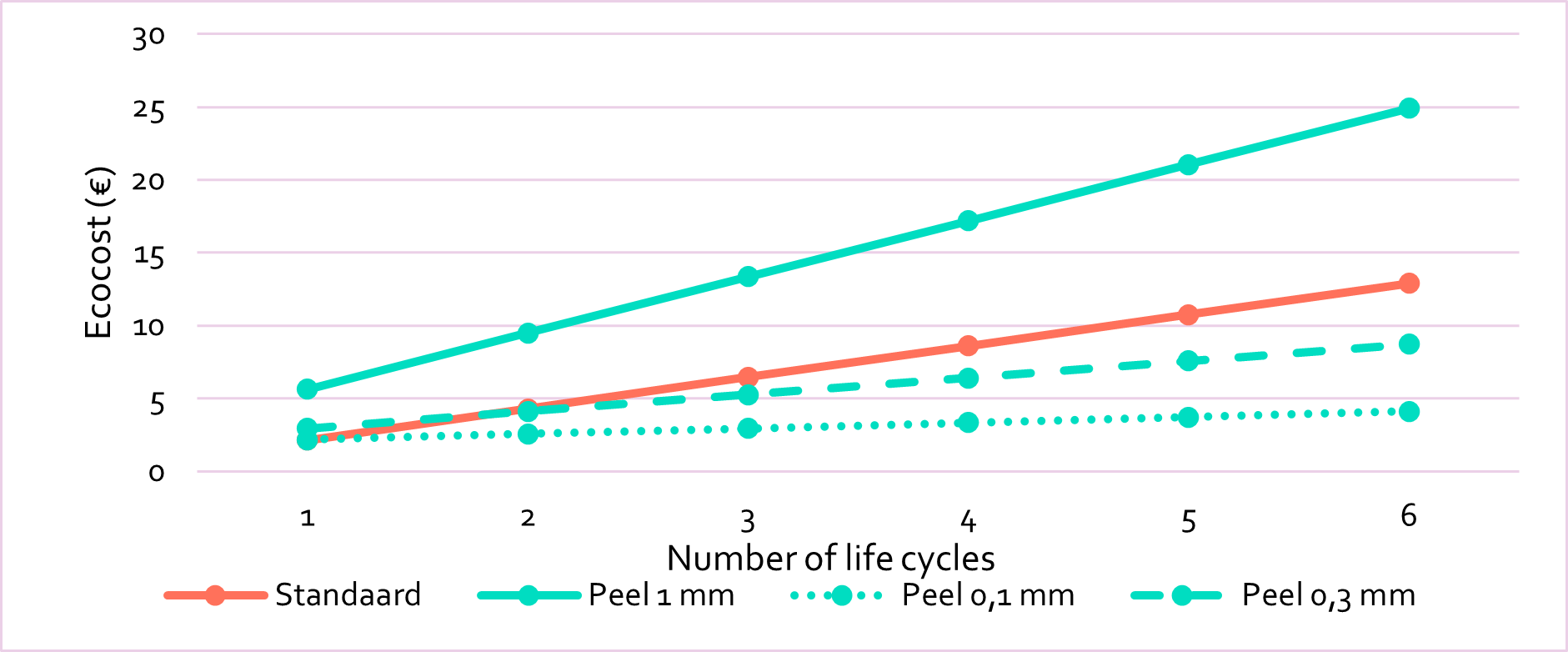Towards sustainable and reusable coatings with PEELDESIGN.
Imagine not having to replace worn-out interior materials but simply having them renewed with a durable and removable coating. Thanks to PEELDESIGN, this is a reality in the making. From shop shelves to office furniture to exhibition stands: with this innovation you save raw materials, reduce the environmental impact and open new doors to circular business models.
The PEELDESIGN project develops removable coatings for interior applications with a relatively short lifespan. In areas such as stand construction and office furniture, these coatings make products reusable multiple times. This saves a lot on raw materials, which are then recycled into pure fractions.
This opens the door to new ‘as-a-service' business models. The simplicity of this technology also allows custom work companies to be involved in the value chain. In short: a sustainable and innovative approach to interior design!
In the context of this project, we calculated the eco-impact of the PEELDESIGN prototypes in three environments: a shop, an office and a trade fair stand. We compare the current, most conventional design with the PEELDESIGN coatings based on an eco-cost calculation. This calculation is based on the environmental impact of the product from production to the end of its lifespan, excluding the impact during transport and during the product lifecycle itself. This shows how sustainable our designs really are.
Scenario 1: Sustainable reuste of shelves
The first product case is a shelf, as used by a shop owner to display products.
For the environmental impact calculation, we start off with a High Pressure Laminate (HPL) panel, with a surface of 1 m² and 6 mm thick. The coating scenarios are on the one hand a classic water-based white coating and on the other hand a peelable PVOH coating, both 0.25 mm thick.
This diagram illustrates the steps of the product cycle, for both the standard and the peelable scenario. The standard scenario follows a linear life cycle, while the board material in the peel scenario is reusable multiple times.
This figure divides the total eco-cost into material, production and waste processing. The eco-cost of the material is further split up into the sheet material itself and the coating. The lower score of the peel scenario is due to the lower environmental impact of the peelable PVOH coating. There is no difference in impact in other categories.
The sheet material has the greatest influence on the eco-cost and CO2 emissions. The use of the peelable coating provides an ecological advantage, even with a limited number of cycles.
We compare the standard scenario, in which the product is replaced in its totality after each life cycle, with the peel scenario. In the peel scenario, the base plate is reused, and only the peelable coating is replaced after each cycle. Although the base plate in the peel scenario must also eventually be replaced, this is not included in the results.
The circular approach of the peel scenario shows a clear difference after just one reuse cycle of the base plate. The environmental impact decreases further as the base plate is reused more often.
Scenario 2: Reusable coatings for office furniture
The second product case in the project is a board for desk or cabinet construction in an office interior. This is usually a chipboard with a melamine finish.
Two scenarios have also been developed here: the standard scenario (a chipboard with a melamine finish) and the peel scenario (a multiplex board with a peelable coating). The peel scenario uses a higher-quality multiplex board. It lasts longer and is more suitable for high-quality peelable coatings than a chipboard.
Here we compare the eco-cost and carbon footprint of the standard versus peel scenario after one life cycle. The eco-cost and carbon footprint of the peel scenario are three times higher than in the standard scenario. This large difference is due to the thickness of the coating. The coating of the melamine top layer is 0.1 mm thick; the peelable coating is 1 mm thick.
That is why we recalculated the peel scenario with multiple coating thicknesses: 1 mm as it was originally; 0.1 mm like the melamine top layer; and 0.3 mm as an intermediate value. The results show that the coating thickness is crucial for the environmental impact of the peel scenario in this product case. From 2 cycles onwards, there is an eco-gain to be gained if we reduce the peel coating to 0.3 mm. In the Sirris coating lab in Heverlee, tests are being conducted to determine whether this is technically feasible.
Scenario 3: Modular and circular exhibition stands
The modular exhibition stands of our partner BeMatrix consist of modular aluminium frames. These are finished with profiles in which the brand visuals of the stand holder click into place. In this scenario, we specifically focus on the reuse of these aluminium profiles.
These finishing profiles easily get dirty or damaged during the construction and dismantling of the exhibition stands. This means that they have to be replaced more often to maintain the desired appearance of the stand. We compare classic powder-coat profiles with peel-coat profiles.
When powder-coated profiles are damaged, there is often no other option than to strip the paint completely to the bare material. Repairing scratches in powder coating requires specific specialisation and is time-consuming.
A scratched peel coating is easily removed from the profile and can be used for the next trade fair after applying a new coating. The results show a clear advantage with peelable coatings. By renewing the coating each time, the aluminium profile retains its value longer than a painted profile.
Project Peeldesign: the first conclusions
- The calculation of a simplified life cycle analysis is based on many assumptions, which increases the uncertainty of the results. Therefore, the results serve as an indicative guideline and not as an absolute truthThe calculation of a simplified life cycle analysis is based on many assumptions, which increases the uncertainty of the results. Therefore, the results serve as an indicative guideline and not as an absolute truth.
The environmental impact of a peelable coating decreases considerably with frequent reuse of the base product.
If the base material has a relatively low environmental impact, such as the chipboard in an office interior, the thickness of the peel coating is crucial for the environmental gain. With reuse, environmental gain is only possible if the impact of the peelable coating is relatively low compared to the base product.
Curious about the Peeldesign applications for your product? Or would you like a lifecycle simulation for a specific project?
Discover the project
PEELDESIGN | Innovative removable coatings designed for product lifetime extension
















